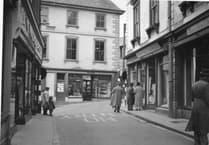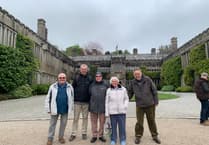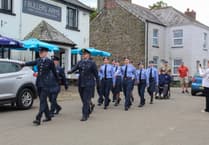Local residents have come together to offer an alternative option to the current proposed Looe flood defence and regeneration scheme.
The ‘Save Banjo Pier’ group is made up of local residents, business owners and those with experience of the quay in Looe. The group has been working together to create an alternative design for the flood defence scheme, which is scheduled to be completed by 2028.
The flood defence looks to protect Looe from frequent and severe flooding and damage over the next 50 to 100 years due to climate change.
The flood defence scheme that the Save Banjo Pier group are oppose to is option one which involves a large outer harbour scheme which will include an extension of the Banjo Pier to form a breakwater and large harbour flood gates.

Members of the Save Banjo Pier group believe this current design will “significantly alter the landscape”, “destroy a large portion of the natural environment and change the harbour’s feel and operation forever.”
The group’s alternative plan looks to be one-third of the size of the original design.
The alternative proposal includes a small breakwater pier from Whiterock, an area of cliff in East Looe, as deigned by Joseph Thomas , the creator of the Banjo Pier, in 1875.
“This breakwater will look to limit wave action in storms and make the inner harbour solution simpler and smaller,” Jamie Pearn, member of the Save Banjo Pier, explains.
Additionally the plan includes, a low-level quay wall with removable access points along East and West Looe to prevent overtopping and a West Looe pathway extension to the new Breakwater Pier and to Hannafore.

“The breakwater would also bring regeneration to the town, in a similar way to WSP’s [WSP are one of the project partners who are involved in designing the scheme] proposal, with no damage to our beloved Banjo Pier. Low-level walls strategically placed along the quay would allow the town time to adapt to rising sea levels.” Jamie continues.
The team have formed a template for an alternative solution.
The Alternative Flood Defence Scheme:
• Meets the economic regeneration goals with further gains possible.
• ⅓ of the size of the WSP option and has no mechanical gate, minimising environmental damage.
• Leaves Banjo Pier untouched.
• Doesn’t destroy Nelson’s Rock or Pennyland (A flood gate would mean concreting over these places of historical significance)
• Allows the West Looe to Hannafore walkway to be built.
• Allows ferries to be landed and tripping and self-drive boats to be launched at all states of tide.
• Protects the harbour walls.
• Has historically significant ties to Looe, following the works of Joseph Thomas, architect of the Banjo Pier.
• Doesn’t increase the speed of the river.
The Save Banjo Pier group have expressed that the cost of their solution and cost-to-benefit ratio is in the same region as the other options presented by the Looe flood defence project team.
Jamie said: “The people of Looe are in a situation where most agree that a flood defence scheme is required, but very few people agree with the current proposal, and it has been difficult to express these concerns with WSP.
“We wish to see this option put forward to the general public by WSP, instead of pushing on with a hugely opposed Full Outer Harbour Scheme. This would give those that will be affected by the schemes a chance to vote on their preferred method.”
The Looe Flood Defence Project team have responded to the petition set up by Jamie.
A spokesperson said: “Over the past years, we (Cornwall Council) have done a lot of collaborative work with various groups within the town. We’ve shared factual survey data with the Looe Marine Conservation Group, listened to their views along with those from the Looe Development Trust, West Looe Town Trust, East Looe Town Trust, Looe Town Council and the RNLI. We’ve worked with the harbour commissioners, fishermen, leisure boat users, dinghy club and RNLI in a group that we’ve called the “Harbour Users Group”. We’ve also met with the “Save Banjo Pier” group of which Jamie Pearn is a member and have spoken with Jamie several times.
“There is no preferred option in our latest consultation. All the technical information is presented in an unbiased way to enable people to select their preferred option.”
“The Tidal Barrier and Breakwater Option is one of seven options being put forward for the town to consider. Others involve Adaptation, Demountable Barriers, Permanent Walls, Tidal Barrier Only, a Quayside Extension or Carrying on as we are. We have been very clear in assessing and scoring the potential environmental effects of which marine and terrestrial ecology are two out of a list of fifteen. Each option presents different effects to the environment, and these should be taken into consideration when determining a preferred option. We are genuinely interested in how people will rank the different options and would like to encourage everyone to take part in the consultation process.”
The Save Banjo Pier group are encouraging local people to have their say and sign a petition which has been set up: “The people of Looe that will live with the consequences should have a say in how we want to protect our town.”





Comments
This article has no comments yet. Be the first to leave a comment.